Archive for September 13th, 2016
13th September
2016
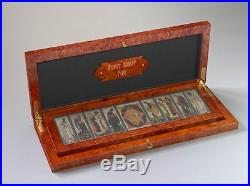
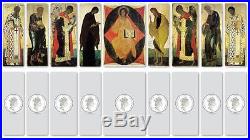
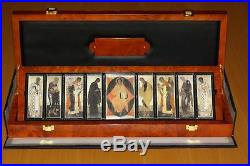
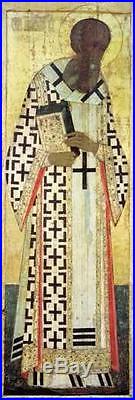

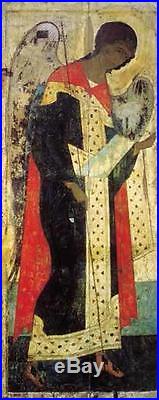
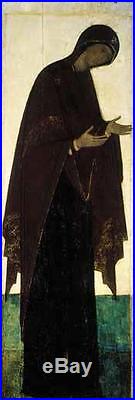
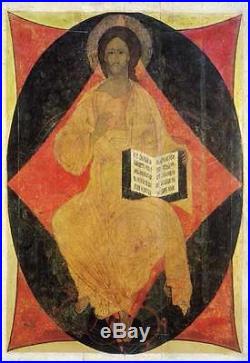
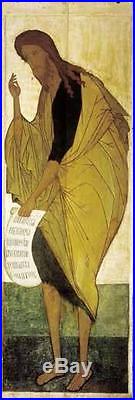
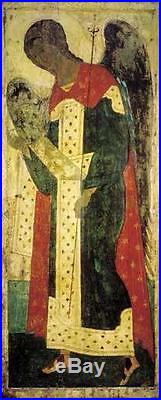
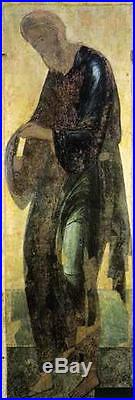
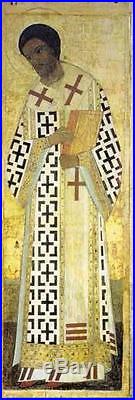
(total: 1000g or 32.15oz). 6x 27.70 mm. 2x 34.50 mm. 1x 54.80 mm. Andrei Rublev (born in the 1360s, died 1427 or January 29, 1430) is considered to be the greatest medieval Russian painter of Orthodox icons and frescoes. There is little information about his life. It is not known where he was born. Andrei Rublev probably lived in the Trinity-St. Sergius Lavra near Moscow under Nikon of Radonezh, who became hegumen after the death of Sergii Radonezhsky (1392). The first mentioning of his name refers to 1405; the document says that for the decoration of the Annunciation Cathedral in Moscow Kremlin. T here were invited the famous Theophanes the Greek, master Prokhor and monk Andrei Rublev. This means that the painter had already changed the unknown to us name given on birth to the name of Andrei. His name was the last of the list of masters as the junior both by rank and by age. Theophanes was an important Byzantine master who moved to Russia, and is considered to have trained Rublev. Historians suppose that Rublev took his vows in the Troitsky (Trinity) monastery under abbot Nikon, pupil and successor of Sergei Radonezhsky. The decorations of the Annunciation Cathedral did not survive the turbulent time, but the Iconostasis still keeps 7 icons. They are evidence of his high skills and the following of the Byzantine tradition. It is difficult to tell with confidence what Rublev’s brushes of icons and frescos belong. Quite probably that he has created “Transformation”. There is the second document, dated 1408, that Andrei Rublev and icon painter Danil (Daniil Tcherny) on May 25 started to decorate the Dormtion Cathedral in Vladimir. Those worksare the only preserved murals by Andrei Rublev, which show his deviation from the Byzantine school. Dormition Cathedral of Vladimir. Dormition Cathedral in Vladimir (sometimes translated Assumption Cathedral) used to be a mother church of medieval Russia in the 13th and 14th centuries. It is part of the World Heritage Site entitled White Monuments of Vladimir and Suzdal. The cathedral was commissioned by Andrew the Pious in his capital Vladimir and dedicated to the Dormition of the Theotokos (Virgin Mary), whom he promoted as the patron saint of his lands. Originally erected in 11581160, the 6-pillared 5-domed cathedral was expanded in 11851189 to reflect the augmented prestige of Vladimir. Embracing the area of 1178 sq. Meters, it remained the largest of Russian churches for the following 300 or 400 years. Andrew the Pious, Vsevolod the Big Nest, and other rulers of Vladimir-Suzdal were interred in the crypt of this church. Unlike many other churches, the cathedral survived the great devastation and fire of Vladimir in 1239, when the Mongol hordes of Batu Khan took hold of the capital. The exterior walls of the church are covered with elaborate carvings. The interior was painted in the 12th century and then repainted by the great Andrei Rublev and Daniil Chernyi in 1408. The Dormition Cathedral served as a model for Aristotele Fioravanti when he designed the eponymous cathedral in the Moscow Kremlin in 14751479. A lofty belltower, combining genuinely Russian, Gothic, and Neoclassical influences, was erected nearby in 1810. The earliest surviving works of Andrei Rublev are now considered icons deesis belt, the so-called Zvenigorod (1400). Preserved icon of the Savior, St. Michael the Archangel and St. Paul, which were discovered in 1918. Written evidence about the authorship of these icons are missing, but the images, analogies can be seen in the frescoes 1408. The Dormition Cathedral in Vladimir, all date back to the most significant works of Andrei Rublev. In the central icon of the Deesis Christ in Majesty depicted Christ with an open text of the Gospel, who sits on the throne. Saints praying before the Savior presented at the other icons, filled with selfless faith in a fair trial. For each character found surprisingly accurate soulful performance does not violate at the same tonal unity of the whole ensemble. The ability to combine emotional sounding single large multi-figure group composes one of the features of the composite gift of Andrei Rublev. The image of Our Lady emphasized the monumental nature of the capacious smooth flowing silhouette, accentuated disturbed gesture of outstretched hands in prayer. The whole image is imbued with a gentle, sad plea, intercession for the human race. The real adornment of color deesis series are inserting in certain places and with certain calculations are different in size and configuration of the red cinnabar. This geometric shapes framing the Savior on the throne in the center, ample cloaks archangels and narrow expressive blotches on the icon of St. Gregory the Theologian and John Chrysostom. The presence of Deesis composition of the congregation of the saints of the two figures of the archangels, Michael and Gabriel, goes back to a long tradition of the image on the sides of the central image of Jesus Christ (the Savior) who worship him heavenly powers. Extremely low mintage – limited to only 500 sets. Comes with a solid, luxurious presentation box made of wood and housed in a carton shipper. Comes with an elaborate booklet containing background information on the icons, the painter and the Dormition Cathedral – the booklet also serves as a Certificate of Authenticity. At our discretion, we may opt to self-insure any order. Return item must be sent within 14 days after it has been received. We strive for 5 star service. Auctiva Free Image Hosting. Show off your items with Auctiva’s Listing Templates. The item “Niue 2012 $2 The Deesis Range by Andrei Rublev 1 Kilo Silver 9 Coin Prestige Set” is in sale since Thursday, September 08, 2016. This item is in the category “Coins & Paper Money\Coins\ World\Australia & Oceania\South Pacific”. The seller is “mimi*store” and is located in Berlin-10623, Berlin. This item can be shipped worldwide.
Comments Off
13th September
2016



Niue 2011 The Villa of the Mysteries of Pompeii 335g (11.41oz) 9 Silver Coin Set. 355g (11.415oz) total. 41 x 336 mm total. The coin set “Villa of Mysteries in Pompeii” is simply beautiful, over 11 ounces of pure silver (355 g). It consists of 9, according to the villa’s frescoes, edgeless color printed bars, of 3 different sizes, which all put together form one coin unit. The largest commemorative coins of the world! In the first century the Roman Empire contains many cities, but none in a more beautiful setting than the cities and towns lining the Bay of Naples. On the 24th of August, 79 A. Volcanic ash spews from Mt. Pompeii and nearby Herculaneum disappear from the face of the earth. Gradually grass and vines cover the land where the towns stood. The local people eventually forget even the name of the buried towns. Herculaneum was rediscovered in 1738 and Pompeii in 1748. By the mid-eighteenth century, when scholars made the journey to Naples and reported on the findings, the imagination of Europe was ignited. Suddenly, the classical world was in vogue. Philosophy, art, architecture, literature, and even fashion drew upon the discoveries of Pompeii and Herculaneum for inspiration; the Neoclassical movement was under way. This villa, built around a central peristyle court and surrounded by terraces, is much like other large villas of Pompeii. However, it contains one very unusual feature; a room decorated with beautiful and strange scenes. This room, known to us as “The Initiation Chamber, ” measures 15 by 25 feet and is located in the front right portion of the villa. The Villa is named for the paintings in one room of the residence. This space may have been a triclinium, and is decorated with very fine frescoes. Although the actual subject of the frescoes is hotly debated, the most common interpretation of the images is scenes of the initiation of a woman into a special cult of Dionysus, a mystery cult that required specific rites and rituals to become a member. Very low mintage – limited to only 250 coin sets. Comes with capsule, certificate of authenticity and a special presentation case. We strive for excellent service. Though we normally reply to inquiries as soon as possible, please note that our office is limited on weekends and holidays. Get Images that Make Supersized Seem Small. Auctiva’s Listing Templates improve your auctions in minutes. Attention Sellers – Get Templates Image Hosting, Scheduling at Auctiva. The item “Niue 2011 The Villa of the Mysteries of Pompeii 335g (11.41oz) 9 Silver Coin Set” is in sale since Monday, September 05, 2016. This item is in the category “Coins & Paper Money\Coins\ World\Australia & Oceania\South Pacific”. The seller is “jvpic” and is located in Berlin. This item can be shipped worldwide.
Comments Off
